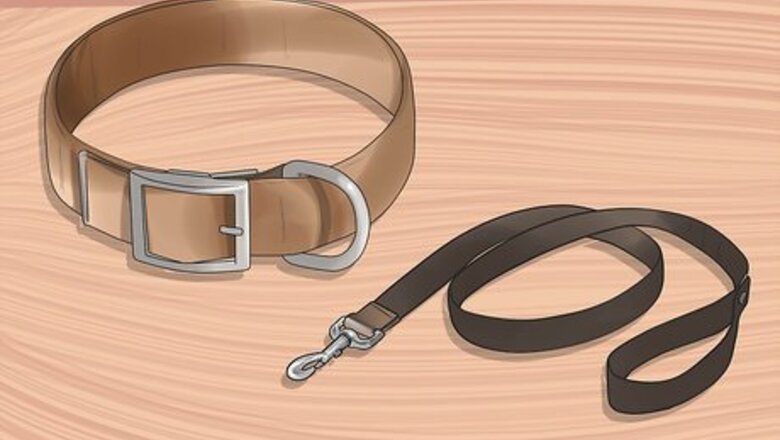
views
Training Your Dog
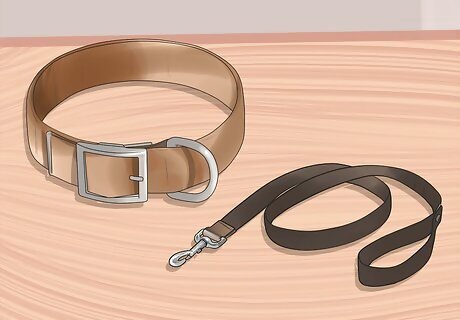
Get the right collar and leash. The collar and leash you choose for your dog is often a matter of aesthetics, but with bully breeds you'll need to keep practical considerations in mind. Remember that because bully breed dogs tend to be stout and muscular, collars and leashes made of strong, unbreakable materials are the best way to control your pet. Try a head collar like those made by Gentle Leader. These redistribute pressure so that your dog is not injured by pulling on the leash. Many dog training experts advise against the use of choke, prong, or shock collars, as these may seriously injure your pet.
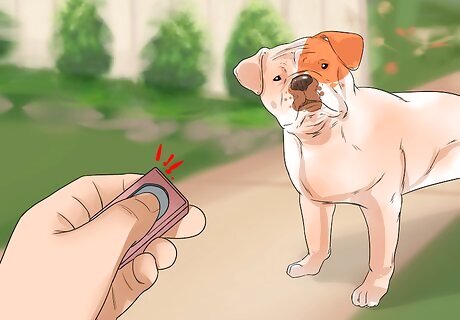
Try clicker training. Clicker training is very successful with some dogs. The point of the clicker is to draw the dog's attention to the specific behavior it is engaging in that's being rewarded. It teaches dogs to expect a reward for good behavior until the dog eventually behaves on command without needing the reward. You can purchase a training clicker at many pet stores or through an online retailer. Use the clicker immediately after your dog displays good behavior and follows your command. The goal is to make your timing precise so the dog knows what's being rewarded. When you activate the clicker, you'll want to reward your dog almost simultaneously with a treat and verbal praise. The reward should come within three seconds of the position your dog holds on command. Start out with simple commands, like "watch me" or "sit," then progress to more advanced commands like "leave it." Eventually your dog will come to understand it's being rewarded for acting on your command and it will begin to follow your commands whether you have a treat in your hand or not.
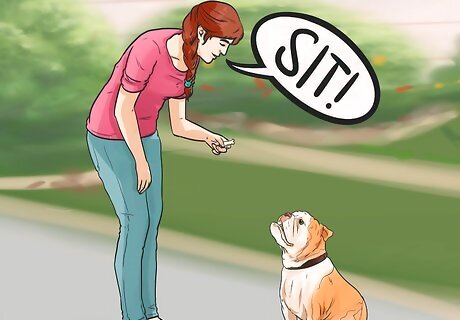
Teach the "sit" command. Verbal commands are a good starting point for training your dog. "Sit" is a basic command that can help break an excited dog from its distraction. You can teach this and other verbal commands at home, or have your dog learn commands from a trainer in an obedience class. Hold a treat in front of and slightly above your dog's head. Say your dog's name and the command "sit" while holding the treat above. When your dog sits, give it a reward and offer verbal praise.
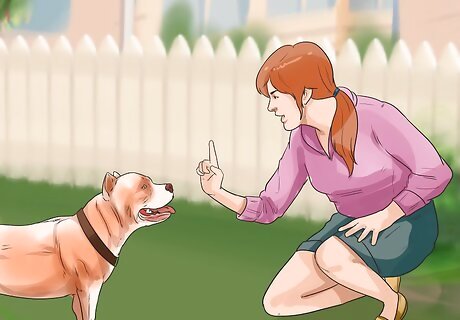
Instruct your dog to stay. Teaching the "stay" command is valuable for preventing undesirable behavior (say, to keep your dog from lunging at food that's fallen) as well as for protecting your dog (keeping it from running in the street or approaching an unfriendly dog, for example). Before your dog can learn to stay, it should already know and follow the "sit" command. Have your dog sit or lie down facing you. Hold up your hand with your palm open and say "stay" or "wait." Wait a few seconds, but don't expect your dog to hold its excitement for too long. Use a word or phrase that indicates your dog is released, such as "okay" or "good stay," then give your dog the treat. If your dog gets up before you've given the release, calmly return to where you were standing and go through the process with your dog again. As your dog learns, you can gradually increase the distance between you and your dog while it stays.
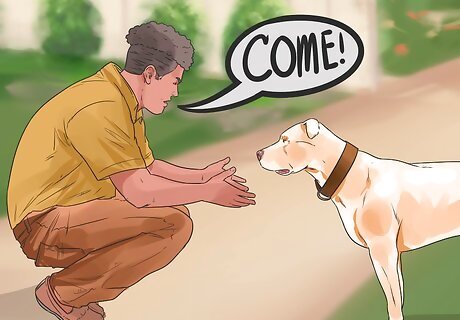
Train your dog to come on command. Coming on command can be a lifesaver if your dog ever gets off leash or approaches another dog against your will. Start out just teaching your dog to recognize your command - either "come," "come here," or simply calling your dog by name. Squat down and open your arms wide while facing your dog. If your dog begins to approach you, give verbal praise and encourage your dog to keep coming to you. Use a happy and encouraging tone of voice as you call your dog. This will help reinforce that your dog is doing what you want by coming on command. If your dog doesn't come to you, attach its leash to its collar and lead your dog to the spot where you were calling from. Be sure to praise your dog while you guide your dog to that spot to reinforce that this was what you wanted. Once your dog gets good at coming on command you can add additional commands, like starting from a "sit" position.
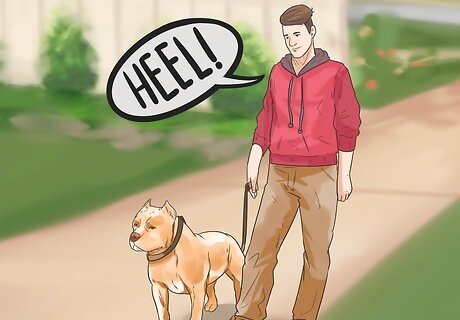
Teach your dog to heel. The "heel" command will help break your dog of undesirable behavior on walks, such as weaving around/between your legs or pulling at the end of its leash. You don't necessarily need to use the word "heel"; you can also say "let's go," "forward," or whatever command you prefer. The key is to choose one command and use it consistently so your dog always knows what you expect. Stand next to your dog with its leash in your left hand and a squeaky toy your dog likes in your right hand. Be sure your dog is on your left side and waiting in a seated position. Extend the squeaky toy across the front of your body so that it's hovering above and slightly in front of your dog's face. Try to get your dog's attention with the toy, then give your verbal command and step forward confidently. Try to hold your dog's attention with the toy. Any time your dog gets distracted, you'll squeeze the toy to regain your dog's attention and give it verbal praise when it re-focuses or looks up at you. After about 20 to 30 seconds of focus and well-behaved walking, praise your dog and give it the toy to play with. You can gradually increase the walk time as your dog progresses in its training. Make sure that the dog is following you, not leading you.
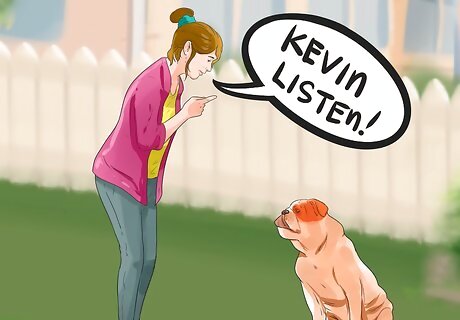
Train your dog the right way. Training and verbal commands are highly effective at breaking bad behavior, but like teaching anything else they require consistency and patience. Make sure you train your dog the right way from the start so that your pet understands what's expected and learns to follow your command no matter what else is happening in your environment. Don't just give commands while sitting or squatting. Try standing or getting into other positions so your dog learns to respond to all types of body language and posture. Make sure your hands are visible. If you put your hands in your pockets, your dog will anticipate a treat and will respond to the reward instead of the verbal cue. Relying too heavily on treats in general will affect your dog's training. If you constantly have a whole bag of treats in your hand, your dog will learn that you only need to be obeyed when the treats are out.

Enroll your dog in obedience classes. Obedience training will help your dog learn basic training and will also socialize your dog. Classes can even help you and your dog bond since you'll typically be involved in the in-class training. You can choose to start with a basic introductory class, or find something that better suits your dog's needs. Obedience classes can help address specific behavioral issues like aggression, antisocial behavior, and refusal to obey. Some dog trainers offer obedience classes specifically tailored towards bully breeds. These classes deal with basic training and address behavioral issues common to bully breeds. You can find obedience classes through local animal trainers. Search online to find a trainer near you or ask your veterinarian for recommendations on a good local trainer.
Socializing Your Dog
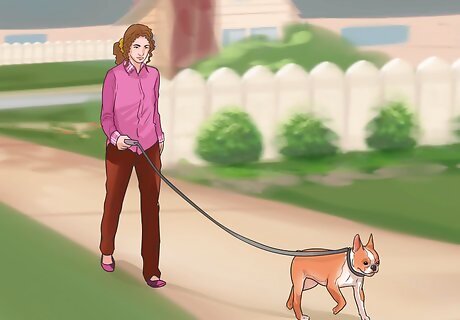
Bond with your dog. It's a good idea to be well bonded with your dog before you introduce it to other people or animals outside the home. Once your dog has bonded with you, it will likely be much more calm and trusting around other people and dogs. Spend time every day playing with your dog one-on-one. You can play catch or simply take your dog for long walks. If your dog is receptive to it, you can try spending some cuddle time together. This may help your dog get comfortable with physical contact and intimacy.
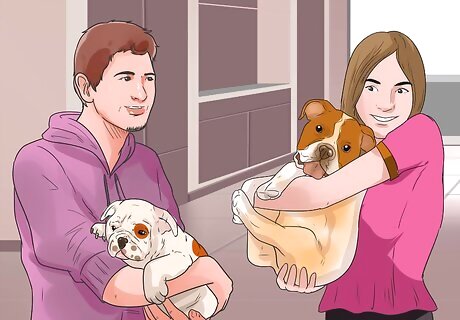
Start your dog young. Socialization is an important part of raising a well-behaved, well-adjusted dog, and bully breeds are no exception. Socialization can help your dog learn to play with other dogs without getting aggressive and get used to being around other people. Dogs should have some socialization with other dogs and people well before reaching 16 weeks of age. This can help acclimate your dog to being around other animals. Be sure to socialize your dog with a variety of other people so that it becomes used to different faces and body types. This includes men and women of varying ages and races, men with facial hair, and people wearing coats and scarves (if you live in a cold climate).
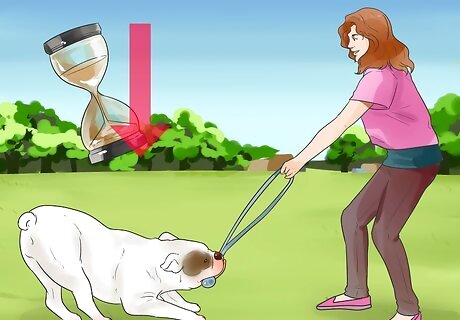
Allow short, supervised playtime. Playtime is a great way for dogs to socialize with one another, but it's important to limit play time and supervise the dogs at all times. You can also use playtime as an opportunity to teach or reinforce training commands. Start out having your dog play with a mellow, well-behaved dog to make the socialization playtime go more smoothly. Choose a dog that is roughly equal in size and energy level. Break up play time with commands every few minutes. These command intermissions should last roughly 30 to 60 seconds before playtime resumes. Have four or five command intermissions four or five times during each playtime session, then separate the dogs at the end and reward them with treats. If possible, schedule play sessions every day (but not more than once each day) with the same dog. Do this for a few consecutive weeks, gradually increasing the command intermissions each time until you reach about 90 seconds of intermission time.
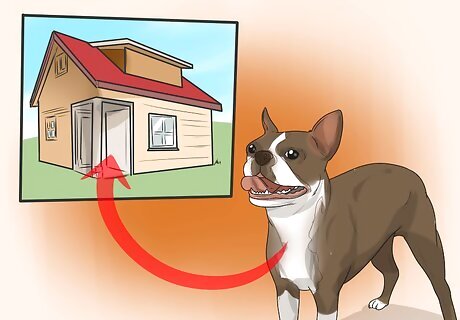
Let your dog live indoors. Dogs that live indoors tend to be calmer and more well-adjusted than dogs forced to live outside. Living inside a home with you and your family will help your dog develop a healthy state of mind. It reinforces your dog's sense of family and its feelings of security.
Addressing Problem Behavior
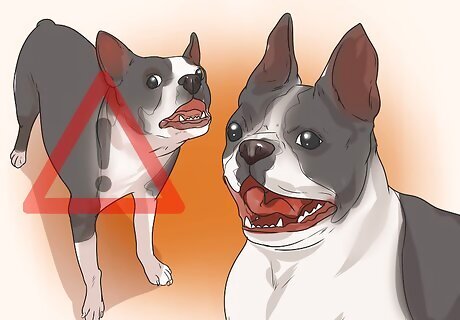
Recognize signs of aggression. If you're worried about your bully breed acting out towards another dog, you'll need to know what to look for. Though every dog is unique and behavior may vary slightly from one dog to another, there are some common signs of aggression to watch out for. These include, but are not limited to: staring at another dog ears turned forward tail rigid and erect over the dog's back barking/growling hair on neck and back standing up crouching or pouncing motions

Feed your dog separately. Feeding time is when many dogs become aggressive or protective. If your dog sees food as a resource to be competed over, it may become aggressive if you feed your dog with another dog in the room or vice versa. Whether you have other dogs or are socializing your bully breed with other dogs, it's best to feed your dog separately from any other dogs. Even dogs that seem well-behaved may have problems sharing a food bowl or seeing another dog eating food.
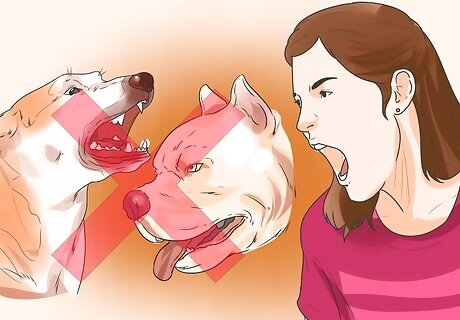
Discourage competition in all forms. Many dog owners encourage their dogs to romp and wrestle with other dogs. However, competition can quickly escalate, and bully breeds may be particularly susceptible to that risk. For this reason, it's best to avoid having your dog compete with any other dog for any reason. Toys and treats are two of the biggest things dogs will commonly compete over. These are both highly-desired resources for dogs, and even playful competition could get out of hand. If your dog starts play wrestling with another dog, supervise them closely. Even well-paired dogs may get out of hand if they feel the need to compete, and you may have to intervene quickly.

Spay or neuter your dog. Though you may not think of altering your dog as a training component, experts generally agree that having your dog spayed or neutered will improve its behavior. That's because an unaltered dog, whether male or female, is more likely to roam away from home and exhibit hostile behavior than a dog that's been spayed or neutered. Most veterinarians are capable of performing a spaying or neutering procedure. Ask your vet about how altering your dog can improve its behavior and its overall demeanor.
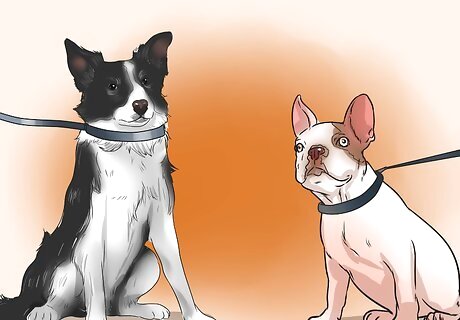
Prevent fights. Getting into a fight with another dog can leave a significant impression on your dog. This could result in fearful or aggressive behavior towards other dogs in the future. Close supervision and careful selection of dog playmates can help prevent fighting. Keep all dogs on their leashes until you know how they'll react towards one another. Be prepared to intervene anytime your dog does play with other dogs. If things look like they're about to get rough, you'll need to step in before the situation becomes hostile. Never, under any circumstances, should you ever reach in with your hands to break up a fight. You should also never grab a dog by its tail, as this will cause it to turn and bite you. Step on the aggressor's feet to distract it. Use a large push broom to break up the fight. Put the bristled end of the broom against the aggressor's chest and force it away from the other dog. Use an unpleasant sound, such as a loud whistle, to distract the dogs. You can also throw water on the dogs to distract them from their aggression towards one another.


















Comments
0 comment